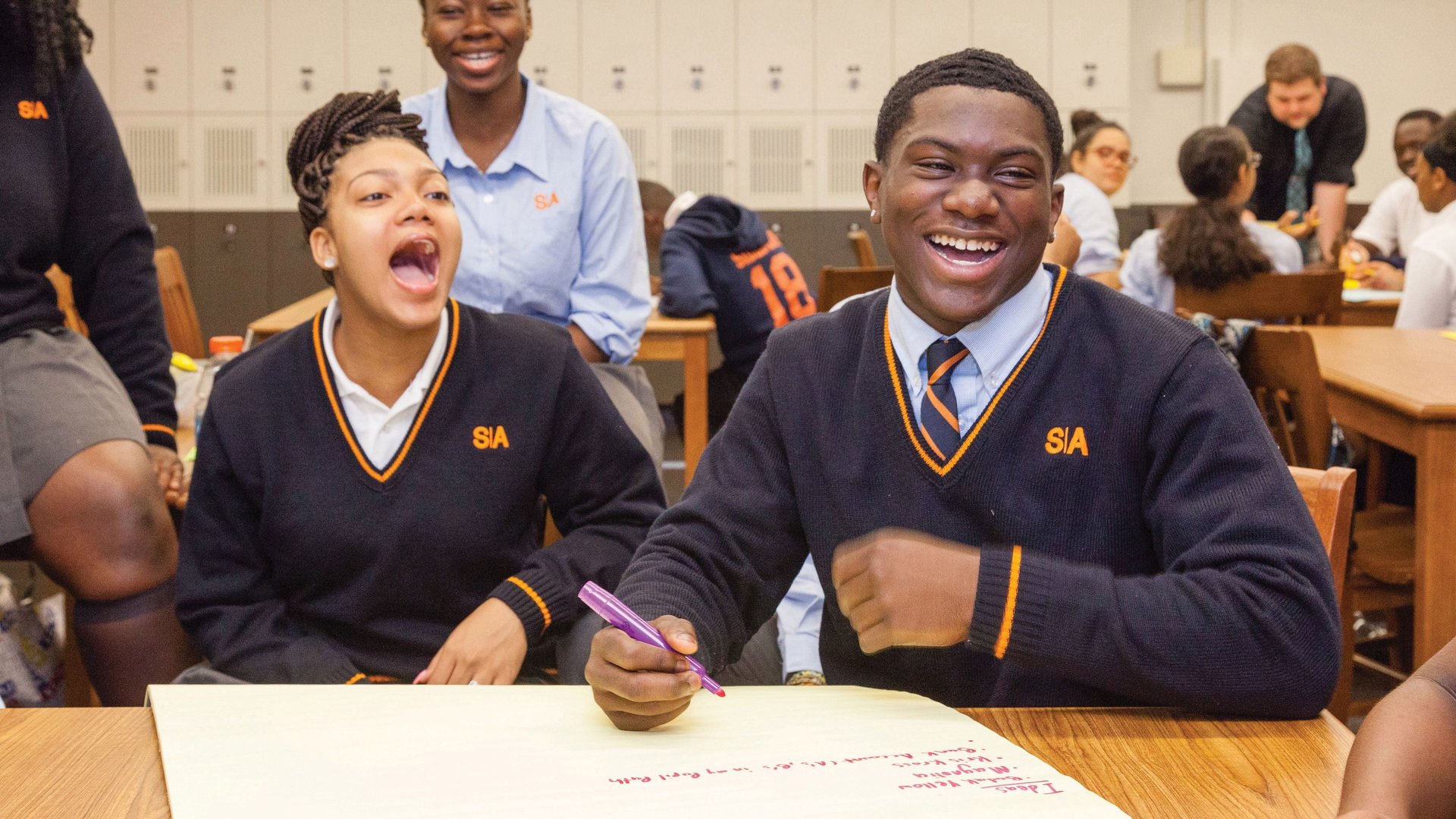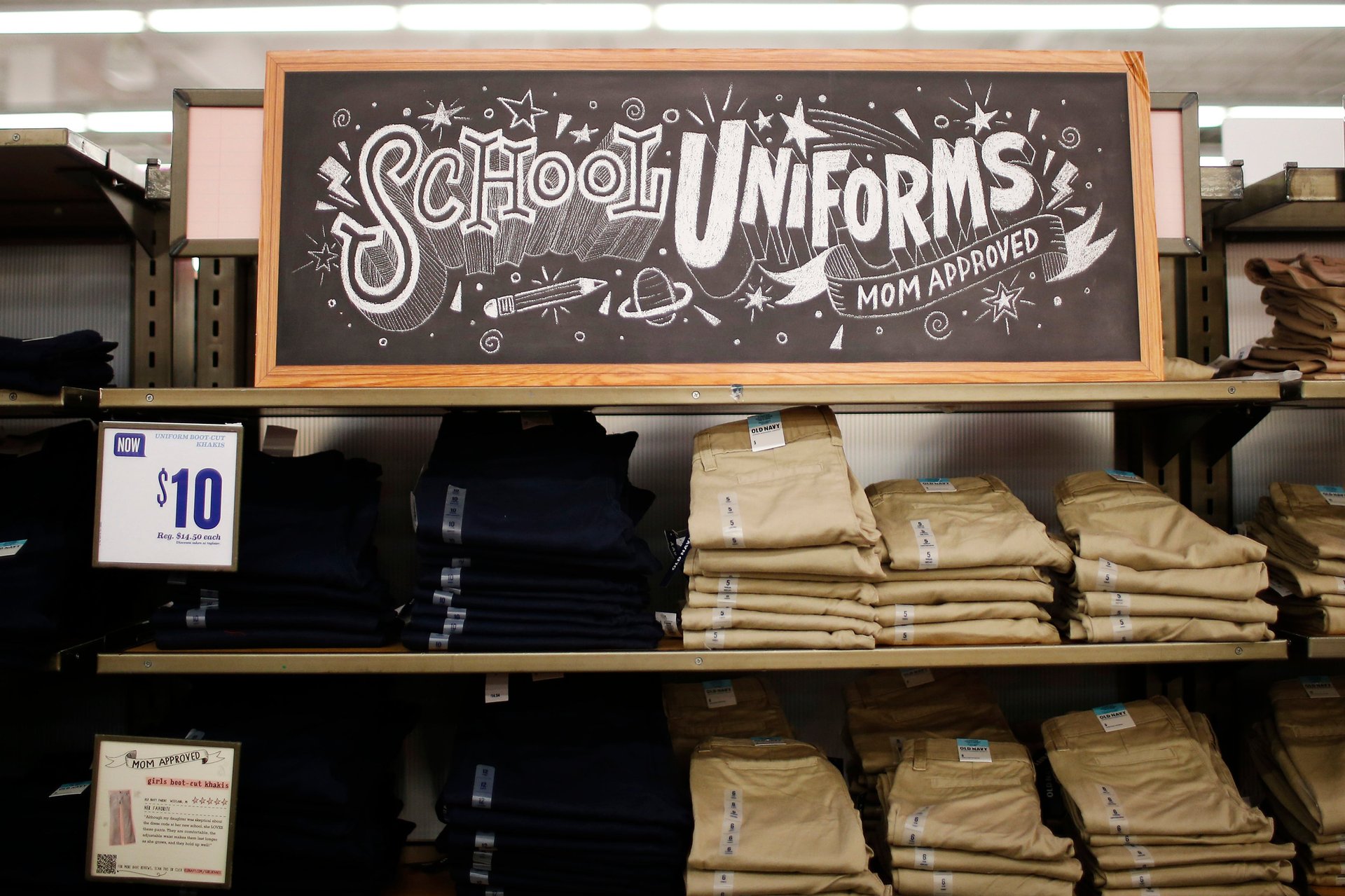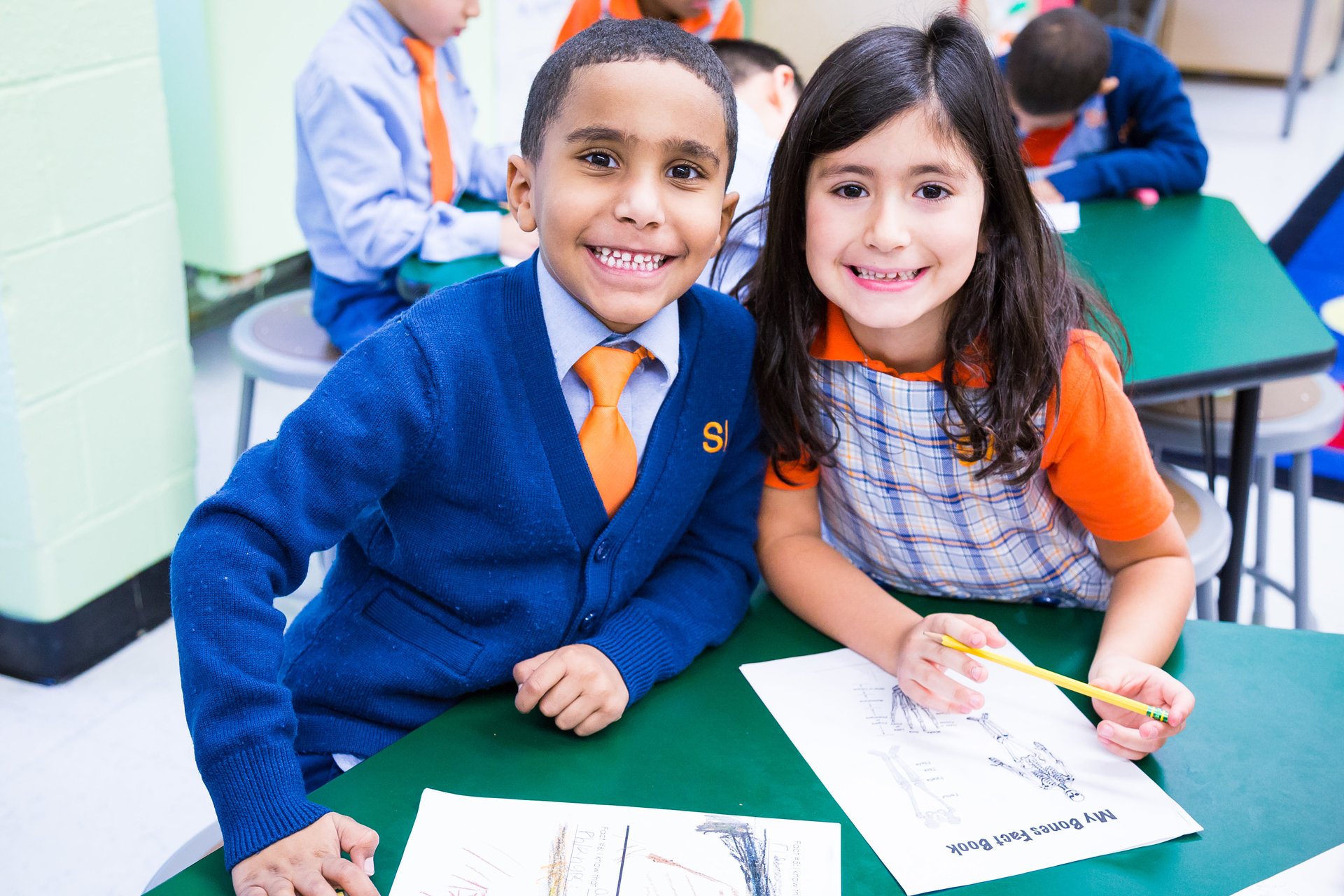More US school kids than ever are wearing uniforms this fall
Uniforms can be a contentious topic in US public schools, particularly for the kids wearing them.


Uniforms can be a contentious topic in US public schools, particularly for the kids wearing them.
“The research we’ve seen finds that the majority of students don’t want to wear school uniforms,” says Deborah Weinswig, founder and CEO of Coresight Research, which surveys adults with school-age children as part of its retail research. “[Uniforms] restrict individuality, they’re expensive, they’re too old-fashioned, they don’t follow any of the current fashion trends and they aren’t flattering.”
Yet as American kids head back to public school this month, far more of them will be wearing uniforms than did just a decade ago. In the school year that ended in 2016, 21.5% of US public schools required students to wear uniforms, according to the National Center for Education Statistics. That’s up from 13.8% in 2006.
Unlike a number of other countries, such as the UK, the US doesn’t have a culture of students wearing uniforms outside of private schools. The first documented conversations on the subject only began in the 1980s, as sociologist David L. Brunsma describes in his book The School Uniform Movement and what it Tells Us about American Education. Among other benefits, uniforms were floated as a way to help curb incidents of violence, including gang violence.

Since then, schools have turned to uniforms for a variety of reasons. While there’s no conclusive evidence that they boost student performance, administrators view them as helpful in creating a sense of community and a school culture that fosters seriousness about learning.
“The idea is to support equality,” says Anne Michaud, a spokesperson for Success Academy, the largest free public charter school network in New York City. “If children are dressed in same or similar fashion, they aren’t distracted by each others’ clothing and judgments about what others are wearing. Uniforms are an equalizer.”
Success Academy has required students to wear uniforms since opening its first school in 2006. Today, the roughly 17,000 students it serves across its 47 schools all wear them. Michaud adds that the communal feeling uniforms support is particularly beneficial for their racially and ethnically diverse schools, and that uniforms are practical and cost-effective, since parents don’t have to worry about keeping their kids dressed in the latest fashions.

Prices can vary, though. In the UK, the charity Family Action warned in 2011 that uniforms were putting a financial burden on poor families, and complaints about the expense from parents pop up on occasion.
In the UK, more than 80% of secondary schools require uniforms, says Sir Kevan Collins, chief executive of the Education Endowment Foundation, and the number is still growing. “There’s been a rise and more attention to it,” Collins says, “with a stronger focus on the school uniform not being a generic uniform that all kids wear in all schools but actually distinguishing your school.”
Of course they’re more embedded in the culture in the UK. In Collins’s experience, students tend to like the uniform, especially if they were involved in the design process.